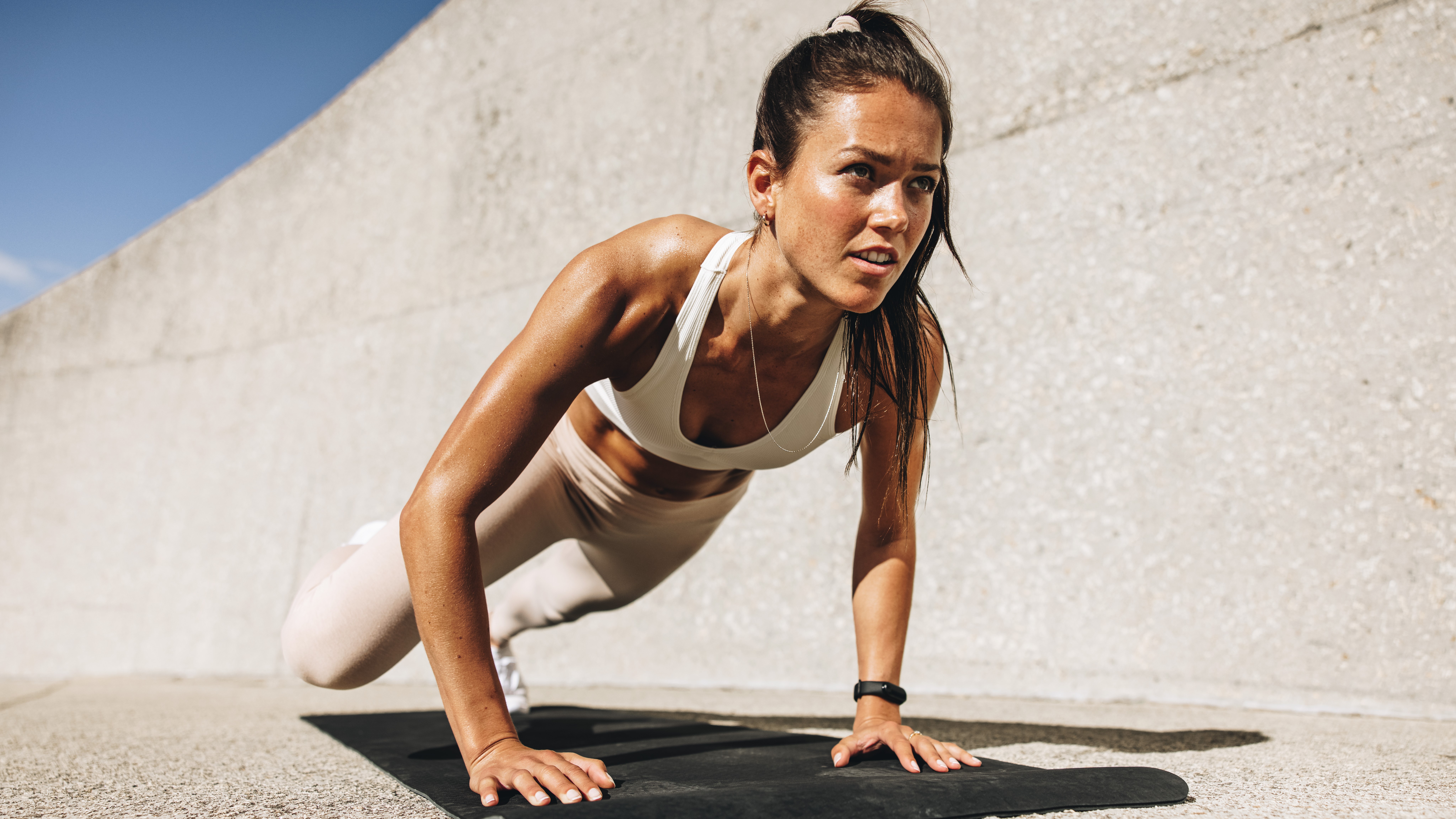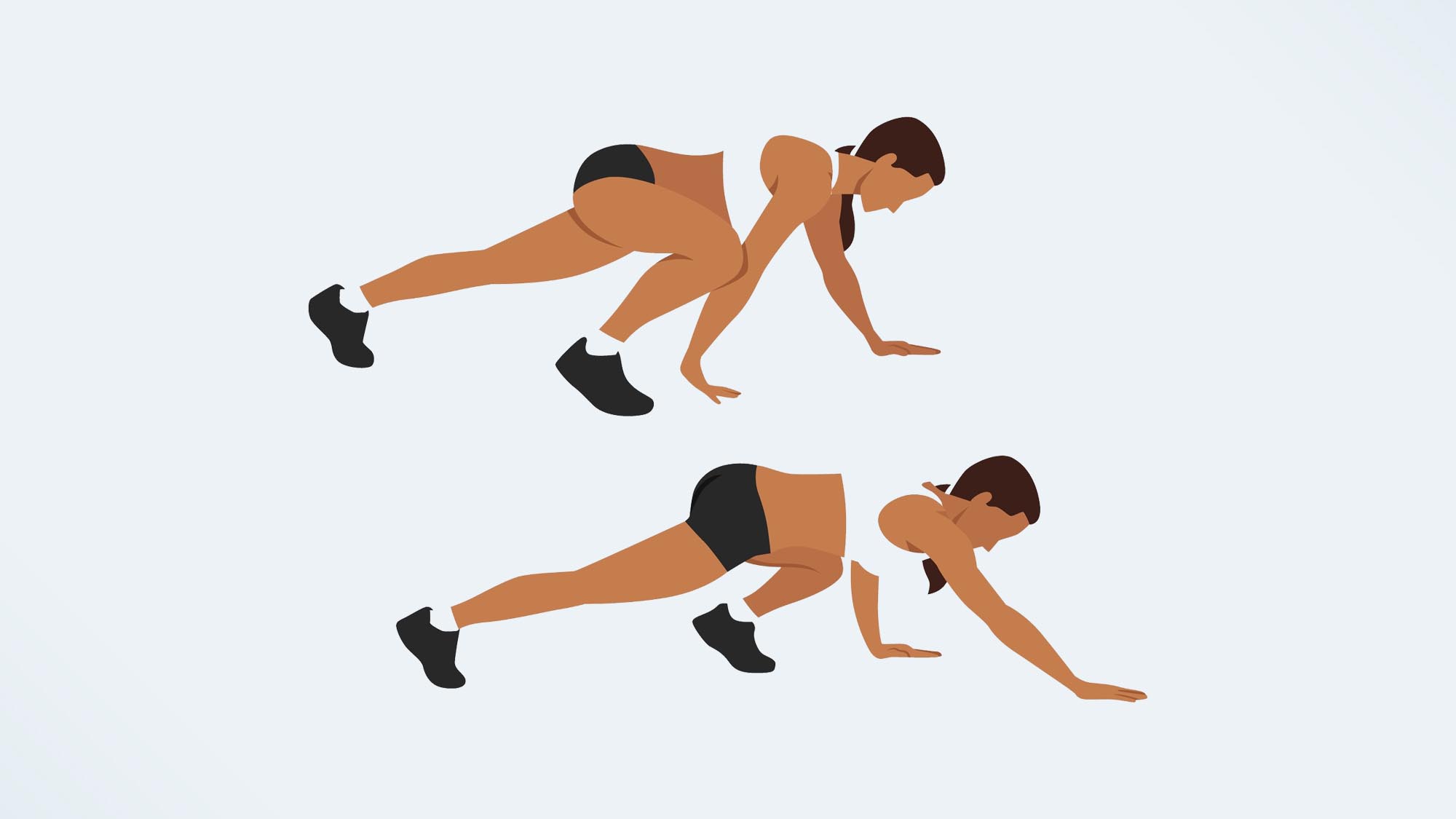
Have you ever heard of the bear crawl? It’s tough on your core, shoulders, back, arms and quads and still strengthens muscles all over. But what would seven minutes a day for a week do to my body? Here’s what went down when I tackled this crawling core exercise.
To do the move, start on your hands and knees, tuck your toes under, and lift your knees an inch off the floor with a flat back. Keep your abs engaged, move your right hand and left foot forward, then repeat with the opposite hand and foot, crawling across the ground like a bear — in theory.
Mentally and physically, I’ve definitely crawled through enough fitness challenges at Tom’s Guide. Undeterred, the bear crawl is next on my list of animal-themed challenges (lest we forget the recent alligator drags), so here’s what I noticed when I tried the move every morning for a week — and a simple hack to torch your legs even more while working your core.
How to do a bear crawl
Here’s how to do the bodyweight exercise. Measure for a number of steps (reps), a set time or distance.

- Start on your hands and knees with a neutral spine, shoulders stacked over wrists and hips directly positioned above your knees
- Engage your stomach, tuck your toes and lift both knees an inch from the floor
- Keep your neck relaxed, then step your right hand and left foot forward, resting on the ball of your foot
- Repeat with the left hand and right foot. Continue crawling forward with both knees hovering just above the floor and your back flat without swinging your hips.
I did the 7-minute Bear Crawl exercise every day for a week — here are my results
I didn’t have enough space
Recently, I did the 5-minute Seal Crawl exercise every day for a week and accumulated a 7-minute Crab Walk exercise. During both, I learned early on that you get the best results from these bodyweight exercises when you have space.
I’m pretty sure my neighbors are baffled by my weekly fitness trips to the communal gardens to roll around like an animal, but hey, it’s my job. If you don’t have outdoor space, I recommend moving forward, backward and side-to-side to maximize the benefits of bear crawls.
I chose to modify
Unlike crunches, sit-ups or any of the other best ab exercises, the bear crawl isn’t an out-and-out core exercise. Although it certainly targets your abs, it’s categorized as a compound movement that stimulates multiple muscle groups, including the deltoids (shoulders), back, chest, hip flexors, quads, glutes, hamstrings and abs.
Get instant access to breaking news, the hottest reviews, great deals and helpful tips.
So why couldn’t I feel much? I’ve seen bear crawl variations crop up everywhere, so from day two, I switched it up fast. Most people find it harder to crawl forward than backward, so I only moved forward and wore a backpack to increase the load on my muscles.
If you’re more fashion-conscious than me, a weight vest or barbell plate on the mid-upper back works just as well.
My hips felt tight
Although the bear crawl builds full-body strength, develops the core muscles and improves endurance, it also improves balance, coordination and mobility. In fact, the crawl shows up in sports team agility drills, and research has shown that this could also improve lower limb and trunk extension explosive strength.
My hips felt tight during this exercise, which was surprising, but my lower body felt noticeably looser by the end of the week. I recommend tacking on some hip mobility exercises for hip flexor pain before and after the exercise if this sounds familiar.
I had to adjust my form
There are a few ways to spot if the move isn’t working for you. If your bum skyrockets toward the ceiling, you’re subconsciously making the exercise easier by reducing load, and if you have long legs, it can be challenging to stop your hips swaying, bum lifting or legs stepping out to the sides.
Try to imagine balancing your dinner on your back — keeping a light barbell plate on the mid-upper back is one way to combat this — or performing the bear crawl in the mirror. Keep your shoulders stacked over your wrists, and don’t let your lower back arch.
I have short legs and found it easy to keep my back flat, but my hips started swinging and I noticed I was moving too quickly so that my knees were creeping upward. As long as you stay aware, you can make corrections fast.
I did the 7-minute Bear Crawl exercise every day for a week — here's my verdict
If crawling along the ground is how you like to get down, here’s my verdict.
I felt the bear crawl most in my hip flexors and shoulder muscles, but I didn’t get as much feedback from my abs or back. If you’re keen to try the move, it will test mobility, stability, and strength, and your arms, shoulders, abs, and quads will drive the movement, helping develop lower-body flexibility and strength, but modify it to meet your current fitness levels.
As a result of upper-body loading, my wrists took a bit of a beating, but that won’t apply to everyone, although it’s worth keeping in mind if you have weak joints. Some people find turning their hands slightly outward can help combat any niggling.

So how do I feel about it now? Undecided. It didn’t ramp up my heart rate or fatigue my muscles like other challenges, and of course, I didn’t notice any marked physical changes to my body after seven days. That said, my hips felt more open toward the end.
I recommend two tricks to make the bear crawl harder. Bear squats develop hip, knee, and ankle flexibility and send your quads into meltdown. Here’s what happened when I did 70 bear squats every day for a week. You could also try a bear plank for 30 to 45 seconds after each crawl, which involves holding the starting position without moving.
I’ve marked the bear crawl down as a brilliant agility drill for group warm-ups or cool-downs during workouts, as it gets the blood flowing and body coordinating. But if you want to build strength, chisel muscle definition, or work on your cardiovascular fitness, we’ve suggested other ways to do this below.
More from Tom's Guide
- You just need 1 kettlebell and 7 exercises to chisel your chest, back and shoulders
- Running vs swimming: Which burns more calories?
- I did 50 chair crunches for a week, here's what happened.

Sam Hopes is a level 3 qualified trainer, a level 2 Reiki practitioner and fitness editor at Tom's Guide. She is also currently undertaking her Yoga For Athletes training course.
Sam has written for various fitness brands and websites over the years and has experience across brands at Future, such as Live Science, Fit&Well, Coach, and T3.
Having coached at fitness studios like F45 and Virgin Active and personal trained, Sam now primarily teaches outdoor bootcamps, bodyweight, calisthenics and kettlebells.
She also coaches mobility and flexibility classes several times a week and believes that true strength comes from a holistic approach to training your body.
Sam has completed two mixed doubles Hyrox competitions in London and the Netherlands and finished her first doubles attempt in 1:11.
